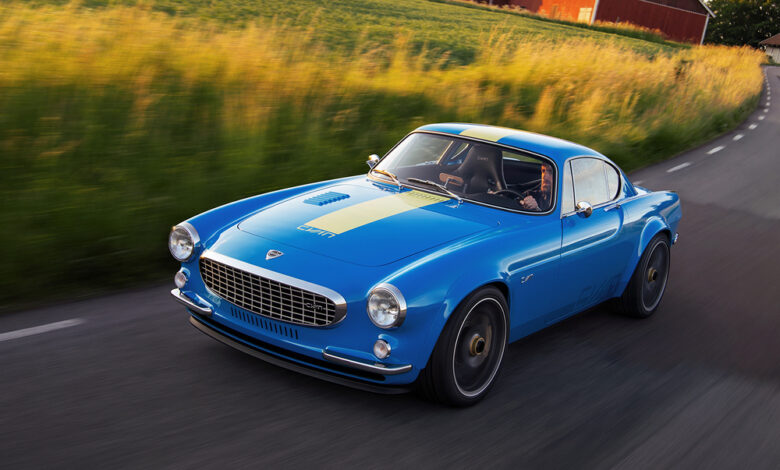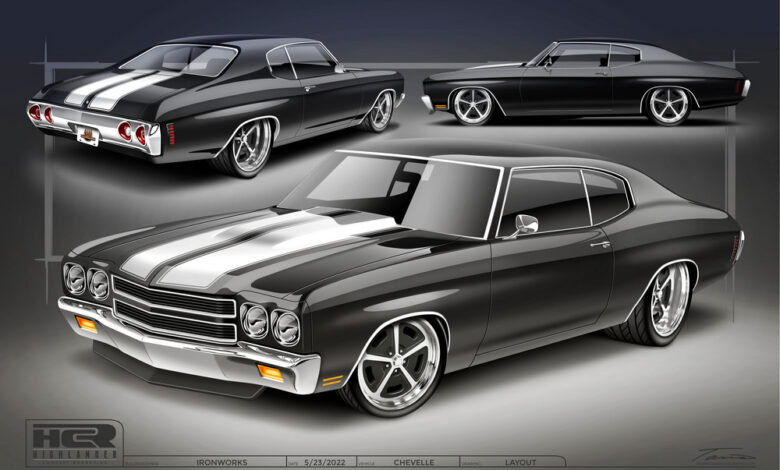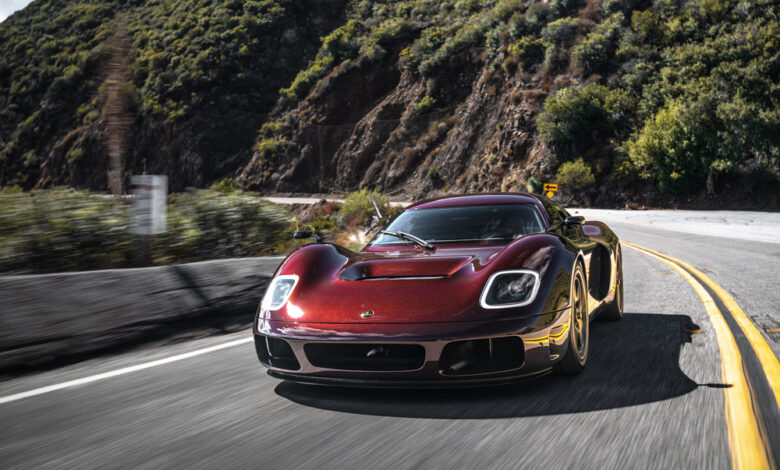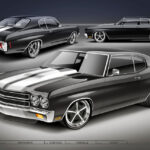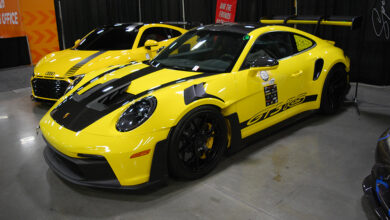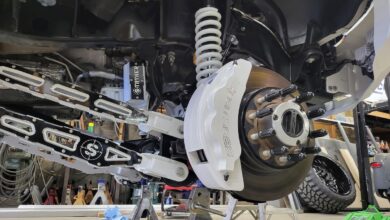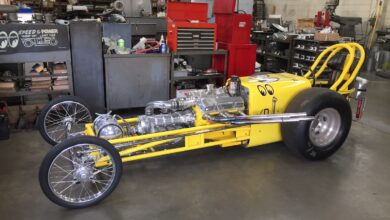This article originally appeared in the April 2023 issue of THE SHOP.
“Reimagining” is a fancy way of describing forming a new concept of something already established.
I don’t think the word was really in common use in automotive circles until Rob Dickinson, founder of Singer Vehicle Design in Torrance, California, used it to describe his signature builds, but now it often appears to define old cars fixed up like new using a plethora of aftermarket products.
Some of the earliest examples of the “reimagining” concept—though they might prefer to call it “reforming,” as you’ll soon discover—were Jonathan and Jamie Ward of Icon in Chatsworth, California. Founded in 1996, the company began by servicing Toyota Land Cruisers, providing sales, service, parts and restoration services.
Servicing soon led to improving and prompted the question, “If I was to revisit the FJ40 design my way,” asks Jonathan, “how would I do it?”
His answer led to a string of successes.
“Starting with the FJ series, then the BR and TR, Jamie and I have continued expanding and exploring innovative designs on a wide variety of vehicles, and we have been blessed to find an audience that has not only appreciated our work, but demanded more,” Ward reveals. “Today, the majority of our custom builds are two-wheel drive vehicles, again with classic styling, modern performance and timeless utility.”
The expanded list of vehicles offered by Icon includes not only Toyotas but also 1950s Chevy-style trucks with LS engines, “Derelicts” that are primarily patinated ’40s and ’50s cars, and “Reformers” that are reimagined for modern use with original styling paired with modern powertrains.
Icon has certainly carved a niche for itself and shows how talented builders can reimagine projects into something more.
A LITTLE SOMETHING EXTRA
On the European front, one of my favorite cars of all time is the Volvo P1800 made famous in the TV show “The Saint.” The P1800 was originally designed by 25-year-old Pelle Petterson, a junior designer at Frua, a subsidiary of Ghia in Italy.
Interestingly, the bodies were built in the UK by Pressed Steel and the cars were initially assembled by Jensen Motors, also in the UK, before production was shifted home to Sweden.
Fewer than 50,000 were produced in a 12-year run from 1961 to 1973, and the car remains a cult classic. It’s no wonder, then, that five-time and reigning World Touring Car champion Cyan Racing of Mölndal, Sweden, decided to revisit the svelte little coupe and give us a reimagined, more exotic dish.
As does Singer, Cyan takes an original car and strips it down to the shell before reengineering and strengthening the structure using high-strength steel and carbon fiber. In fact, the carbon body is integrated with the steel cabin structure in a way that allows the carbon fiber to reinforce the structural rigidity.
Under the carbon hood is a turbocharged 2.0L four-banger based on the engine from Cyan’s title-winning Volvo S60 TC1 race car. It produces 420 hp at 7,000 rpm and 356 pound-feet of torque at 6,000 rpm—plenty for a car that weighs only 2,180 pounds.
The car is rear-wheel drive and employs a 5-speed Holinger manual trans. Prices for the wider, leaner, faster Cyan start at around $700,000 and that seems to be in the wheelhouse of going rates for reimagined vehicles.
A TALE OF TWO COUNTRIES
Based in the USA but with a truly British heart and soul, Radford draws upon its heritage and the craftsmanship of Harold Radford, the creator of countless bespoke vehicles, to present the resurrected Radford (nee Lotus) Type 62-2.
Its first new model of the modern era is built in a partnership with Lotus and is a stunning tribute to the original Lotus Type 62. Three versions of this hand-built car will be available: the Type 62-2 Classic, the Gold Leaf and the John Player Special version.
While this mid-engine two-seater takes inspiration from the revered Type 62, it utilizes the latest technologies to deliver a pure driving experience. Each variation is powered by a 3.5L, 24-valve V-6 rated at 430 hp in the Classic up to a mind-blowing 600 hp in the John Player Special—imagine that in a car that weighs under 2,200 pounds!
A combo of carbon fiber and an aluminum chassis makes the Type 62-2 one of the most powerful-yet-lightweight supercars available today. And it’s exclusive, too, as each of the 62 models will be hand-built using Lotus technology and every car can be customized to the owner’s specs.
In fact, the build process is overseen by TV personality and Radford co-owner Ant Anstead, and, as if that’s not enough, Formula 1 world champion Jenson Button, also a co-owner, is the chief test driver responsible for meticulously tuning each vehicle.
The Radford Type 62-2 is a truly lightweight, retro-futuristic supercar that is inspired by a vintage racer—but it is also one that is designed and built to function as a practical, usable daily road car, too.
HIGH DEMAND
Not all reimagined vehicles start in Europe. Take, for example, Rodger Lee of Ironworks Speed & Kustom in Bakersfield, California. Ten years ago, Lee built a classic 1970 Chevelle that appeared on the cover of “HOT ROD” magazine, among others, and sparked such interest that he eventually decided to replicate it.
Lee describes the five cars currently in progress as “timelessly styled with modern amenities.” The vehicles enjoy the benefits of a Speedtech chassis featuring independent front and rear suspension, custom-tuned JRi shocks and Wilwood brakes on all four corners. They roll on Keystone-style wheels by Forgeline shod with 285/35/19 Michelin front tires and 335/30/20 Michelin rears.
Under the hood, customers have a choice of powertrains—either a Chevy LT1 or a supercharged LT4. The LT1 produces approximately 380 hp while the blown LT4 produces 650 hp.
Six-speed manuals or 10-speed autos are available. All combinations employ GM control systems.
Inside, the Ironworks Chevelles are equally reimagined and utilize late-model Camaro power seats with temp control. Also, the seats have been lowered 2 inches.
If you like the styling of a classic Chevelle but want the drivability of a modern car, then the Ironworks Chevelle could fit the bill.
So, obviously this trend of reimagining vehicles is just hot rodding under a different guise and one can glean from the short list preceding that an awful lot of aftermarket parts—everything from brakes to upholstery—are used in these builds.
“They really wouldn’t be possible,” says Greg Emmerson, director of public relations at The ID Agency in Los Angeles, “if it weren’t for the aftermarket producing the necessary parts.”
Now imagine that.
